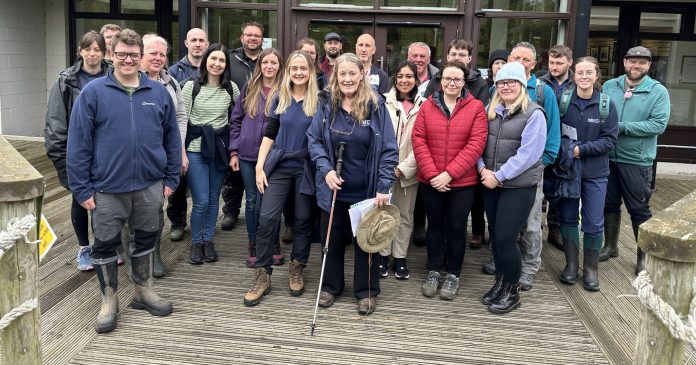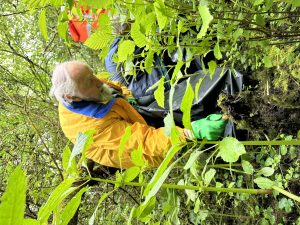
Thousands of harmful plants were removed from the lough shore area at Oxford Island last week during an event held to mark Invasive Species Week.
Dozens of volunteers turned out for the ‘Balsam Bash’ on Friday which was organised by ABC Council’s Climate, Sustainability and Parks department in partnership with the Northern Ireland Environment Agency (NIEA).
Their mission was to remove the Himalayan balsam plant which has spread to many parts of Northern Ireland particularly in areas close to waterways, such as loughs and rivers.
Rachel Hamill who is a member of the Invasive Species team with NIEA, said the Balsam Bash was an important way of limiting the spread of the plant and also raising awareness of the damage it can cause to the environment and natural habitats.

She said: “We are here today to pull the balsam out of the ground and the reason that we are doing this, is that it is an invasive species and as it’s Invasive Species Week we are trying to raise awareness of these species and how they harm our native environment.
“Balsam is widely spread across Northern Ireland and it is a big problem because it just takes over the whole habitat which means that nothing else grows. It shades out our native plants and it is more attractive to our pollinators so our native plants aren’t getting pollinated. There is now a legal requirement for all landowners remove it from their ground, so today is about assisting the council in that task at Oxford Island.”
A council spokesperson said the Balsam Bash had made a positive impact. They said: “We are lucky to have such an important natural resource as Oxford Island and it’s important that we play our part in limiting the spread of this invasive species.
“This event has also proven very effective in raising awareness of the problem of invasive species and the damage that they can do. Tackling invasive species like Himalayan Balsam is a vital part in protecting our environment.”
Himalayan balsam can grow up to 10ft in height and between June and October it produces clusters of purplish pink (or rarely white) helmet-shaped flowers. The flowers are followed by seed pods that open explosively when ripe.







